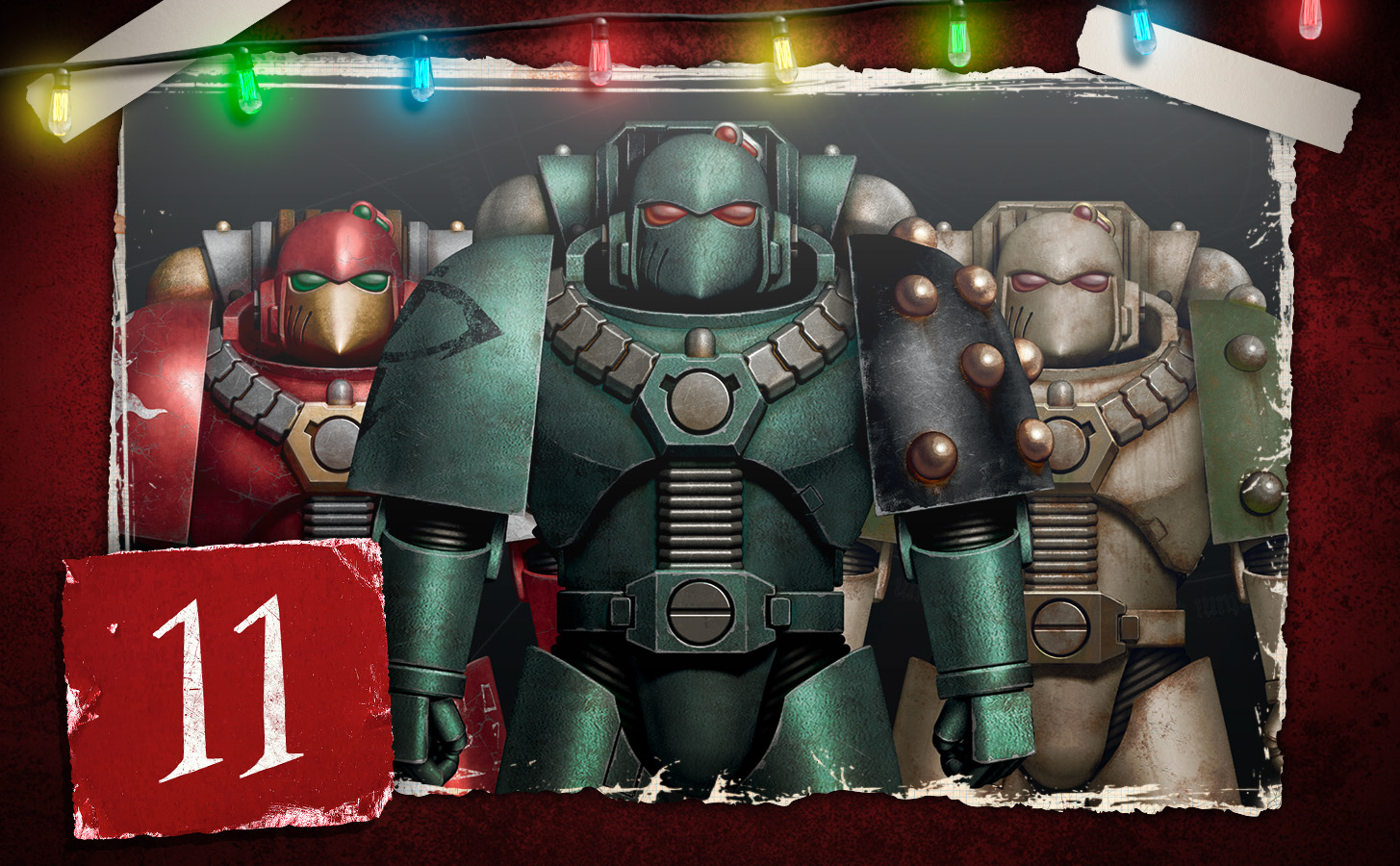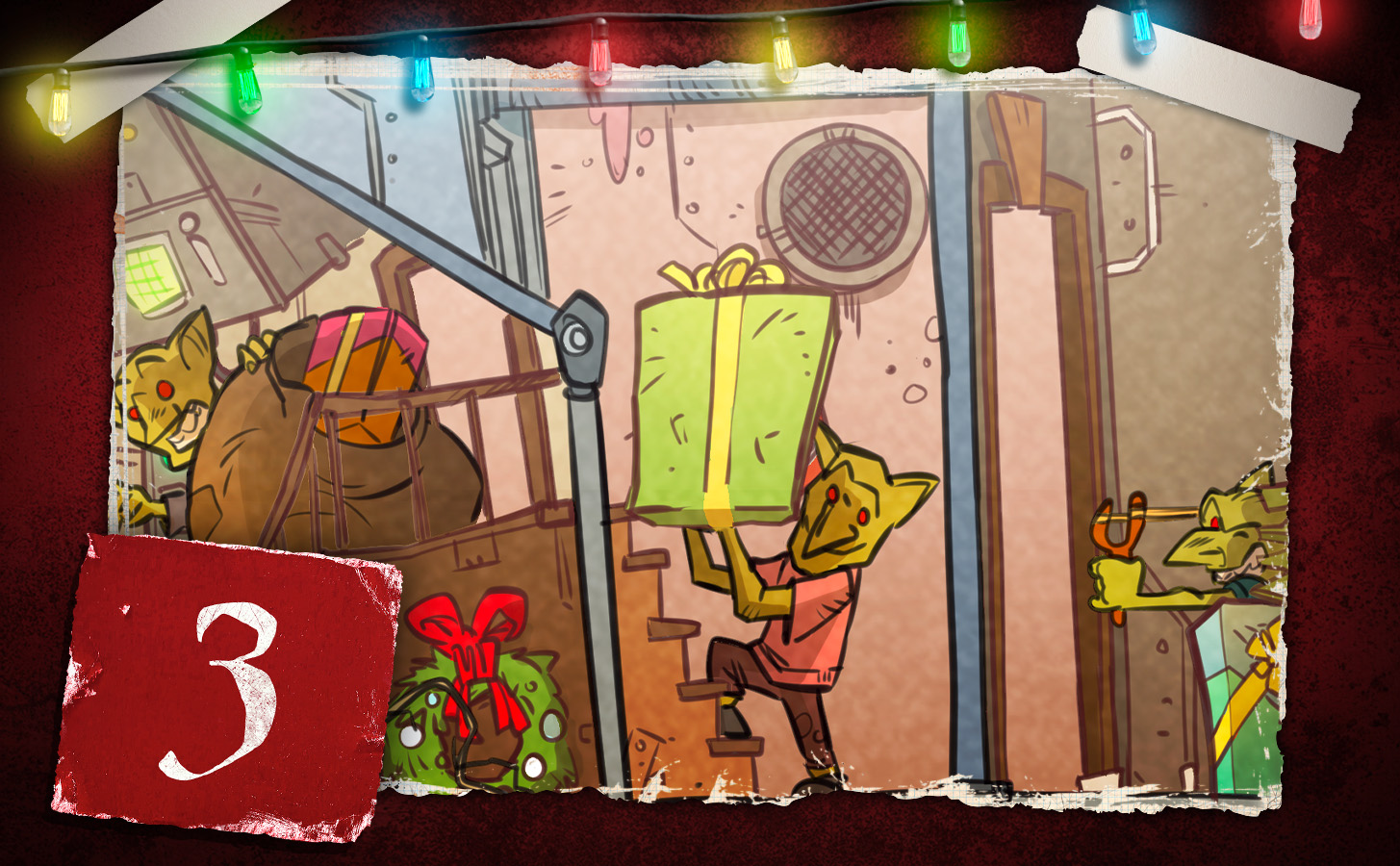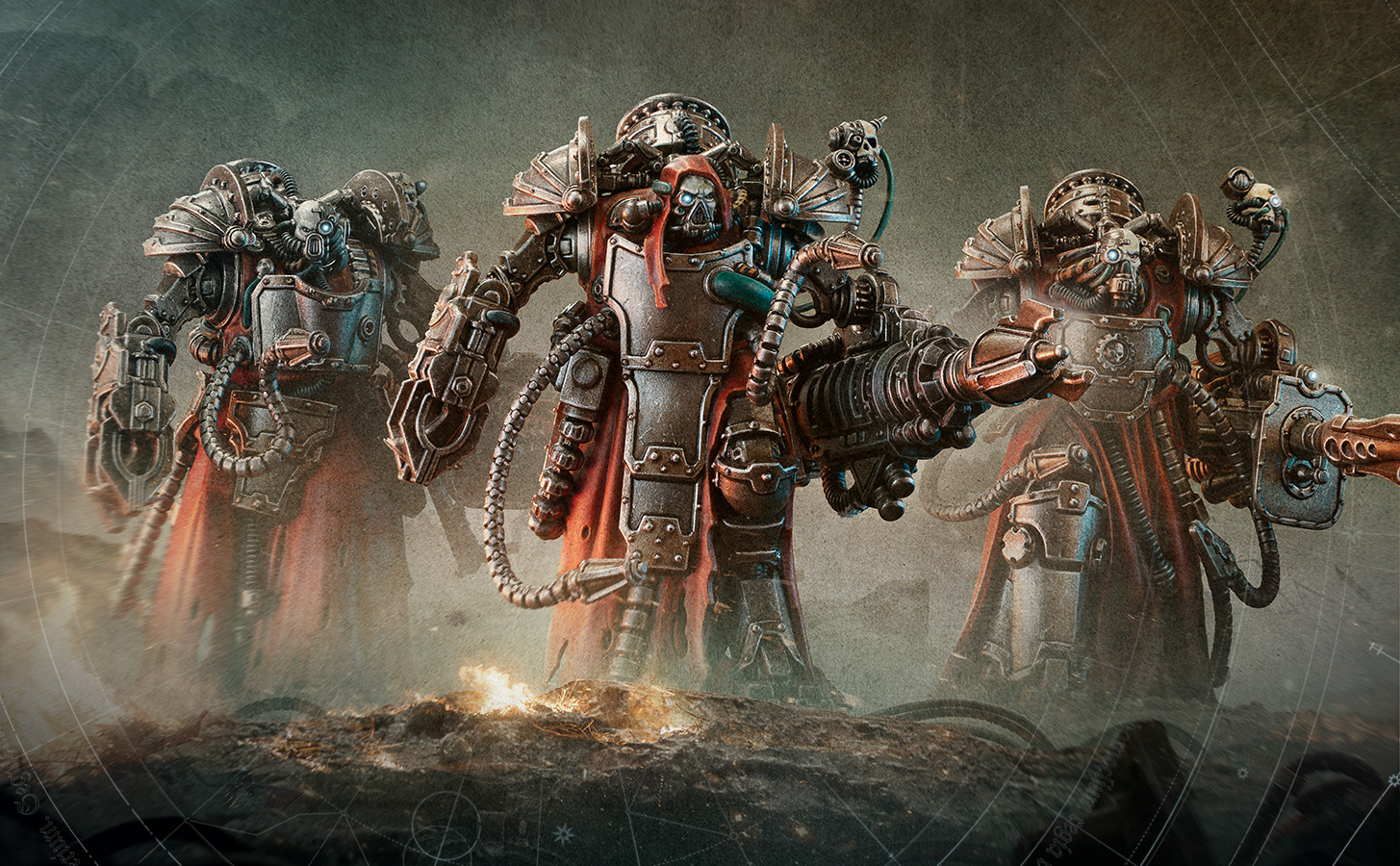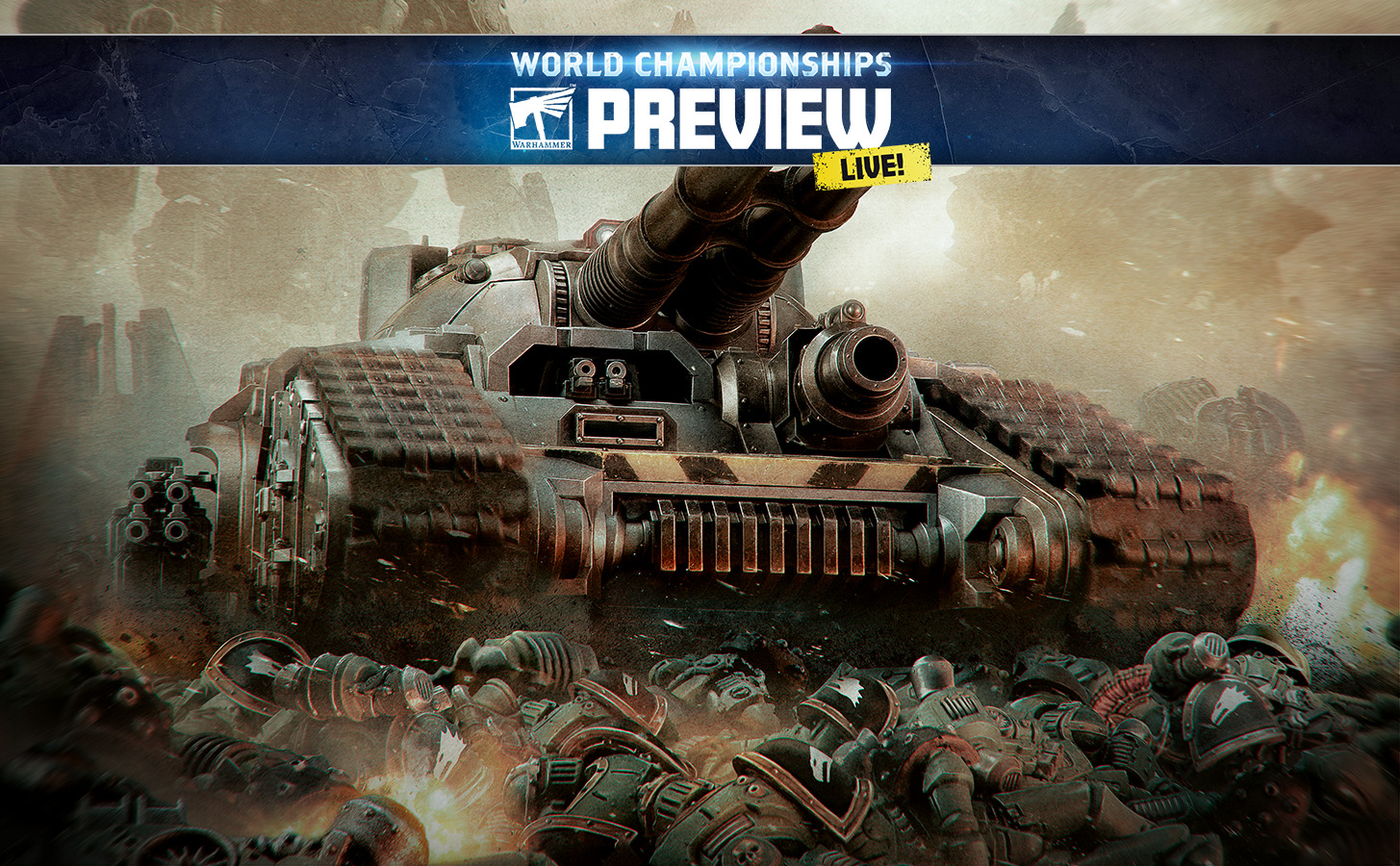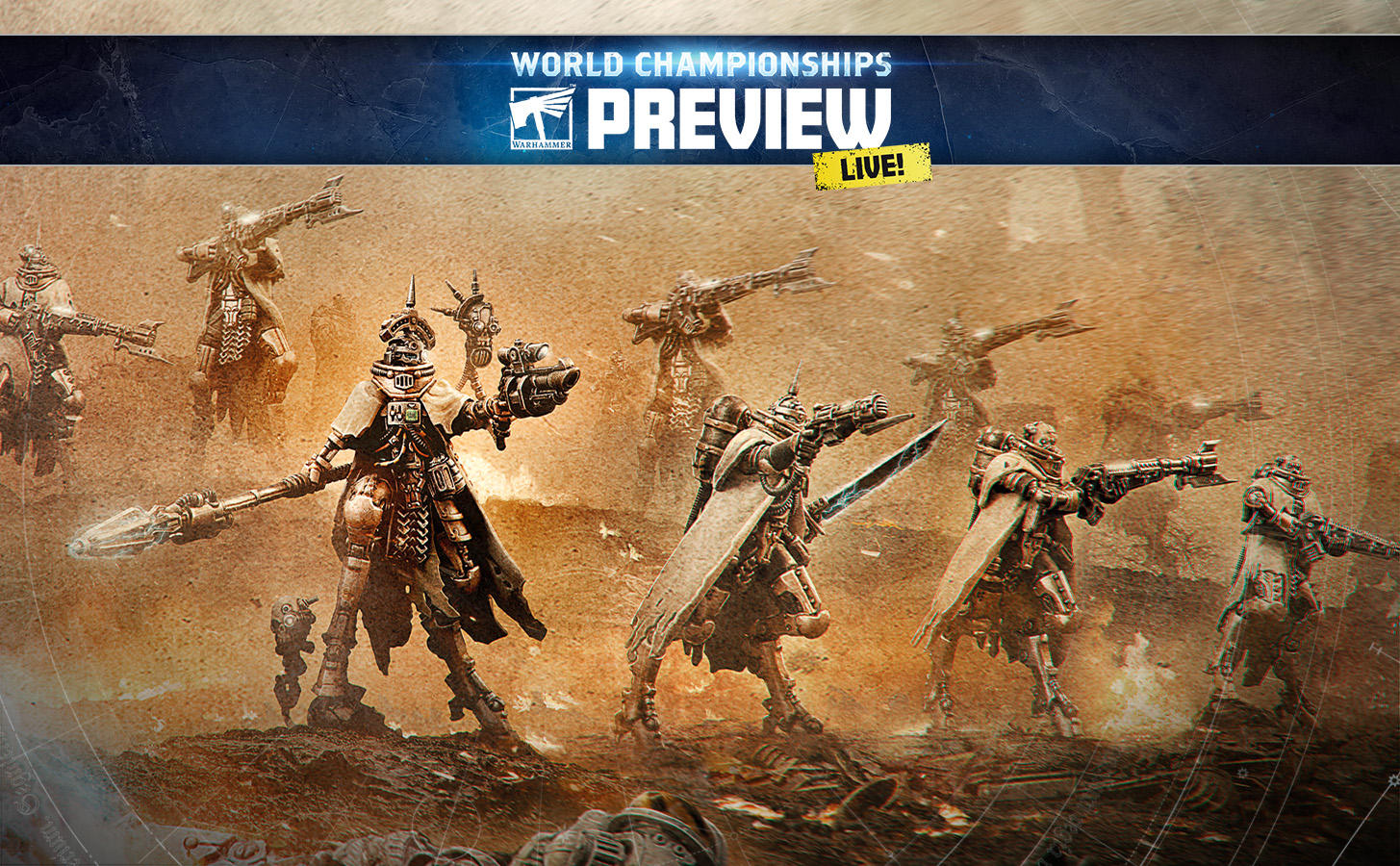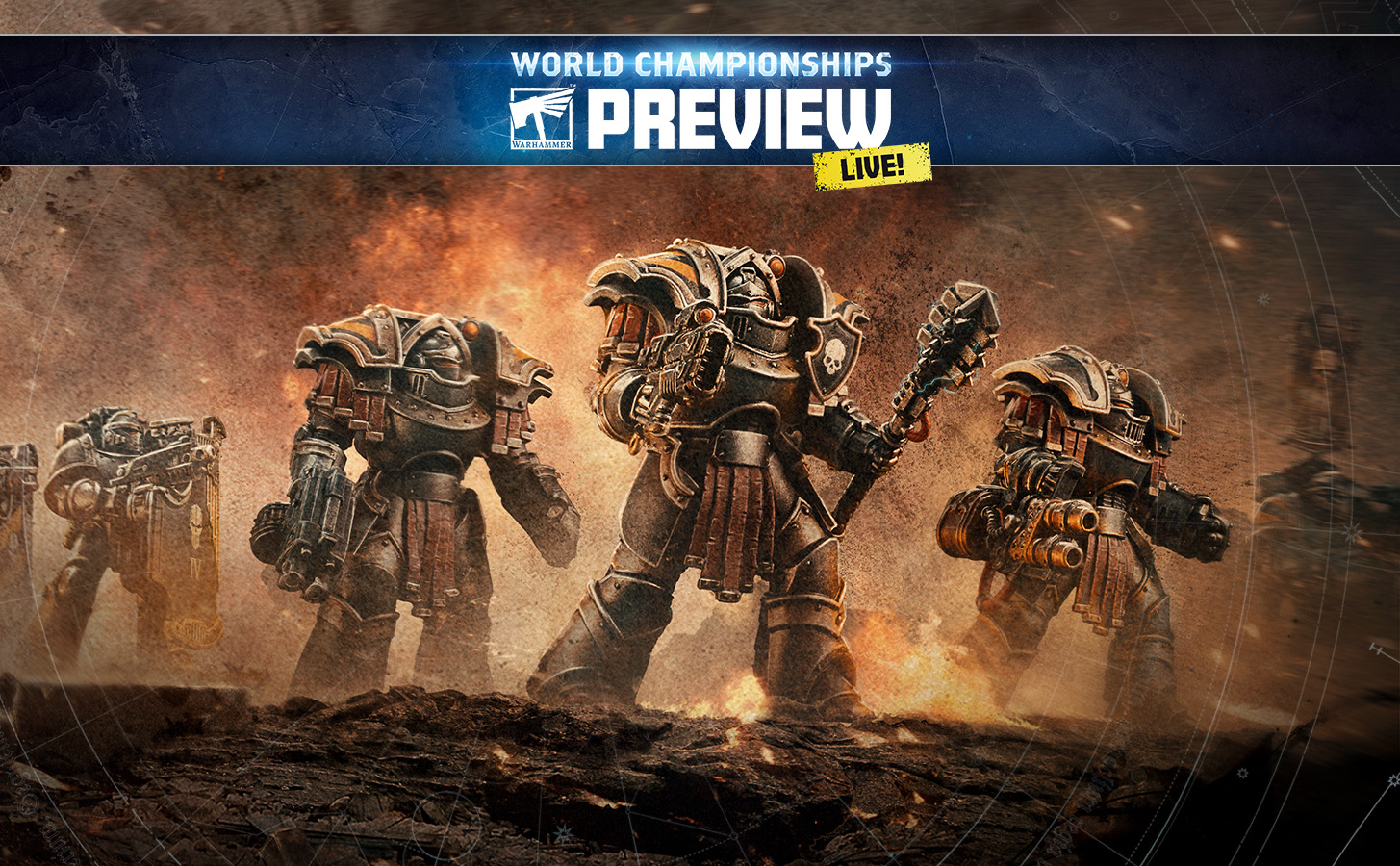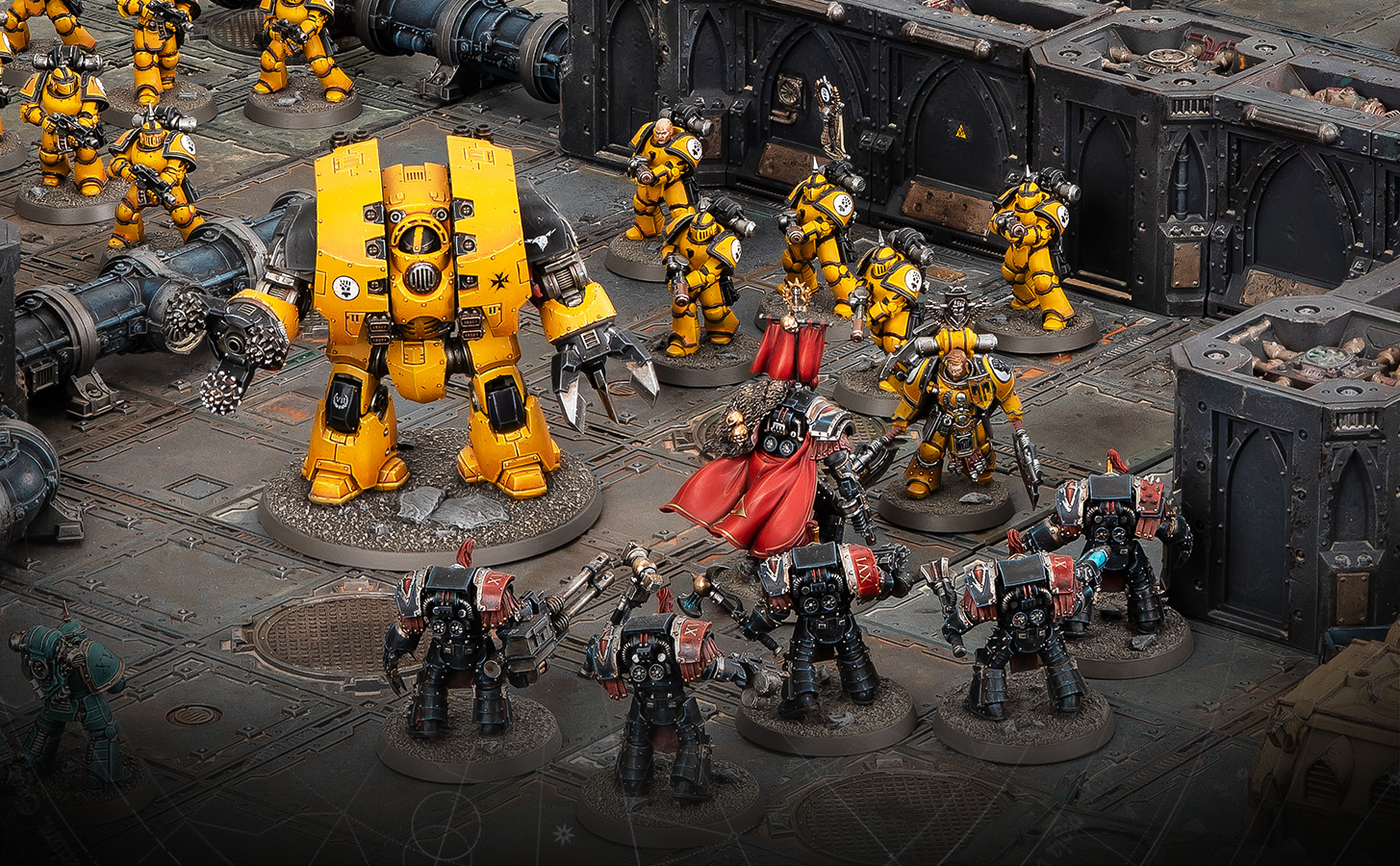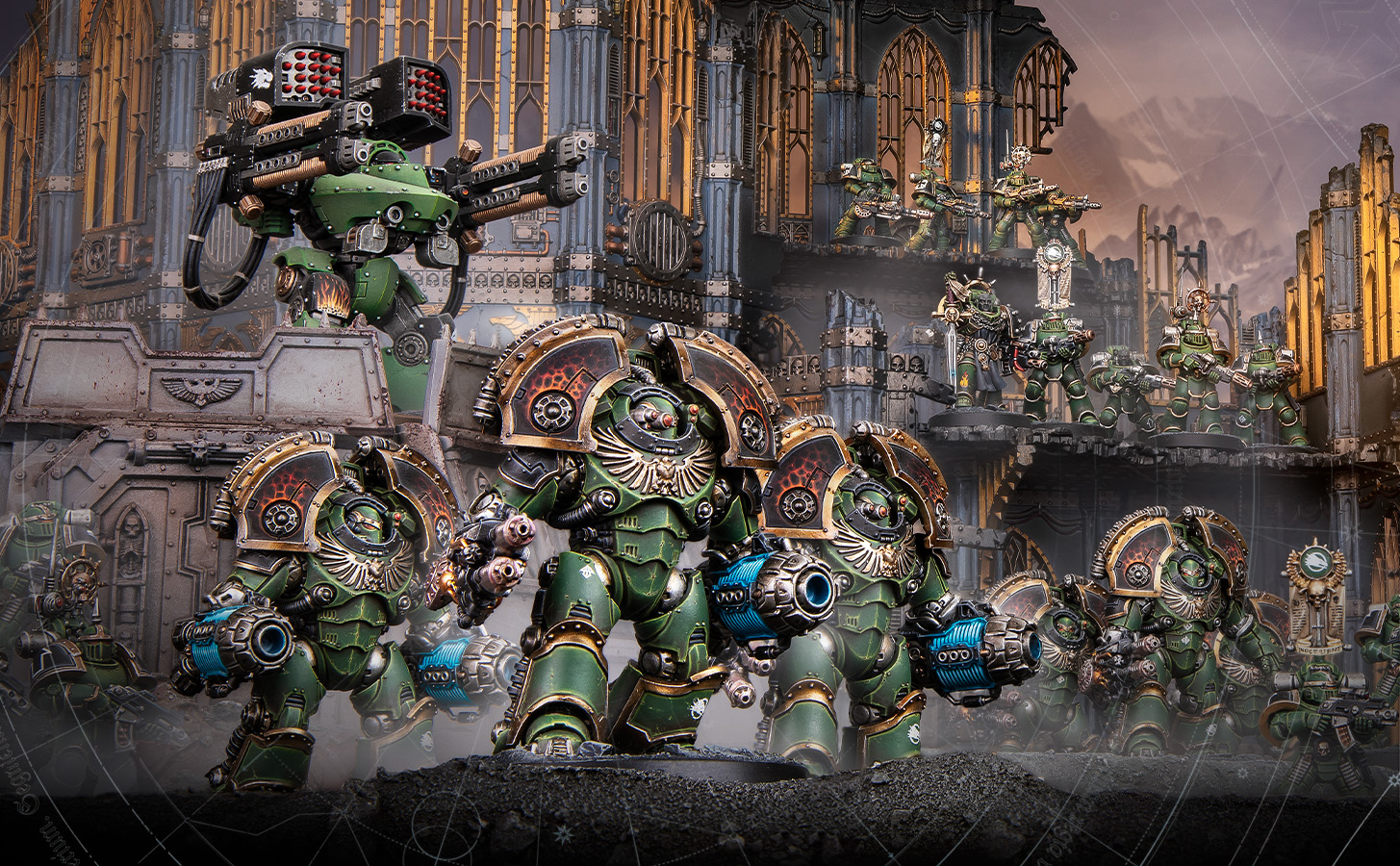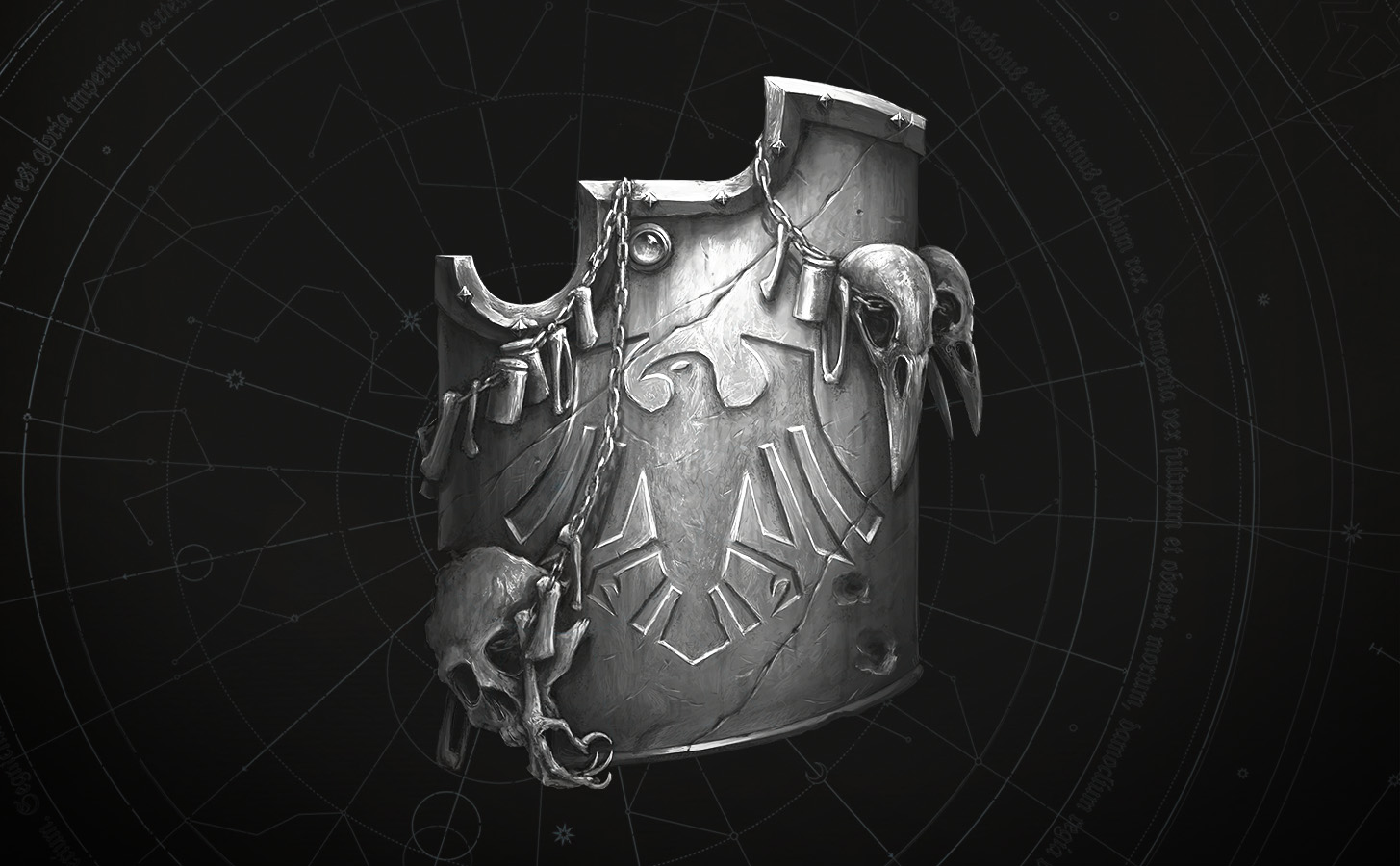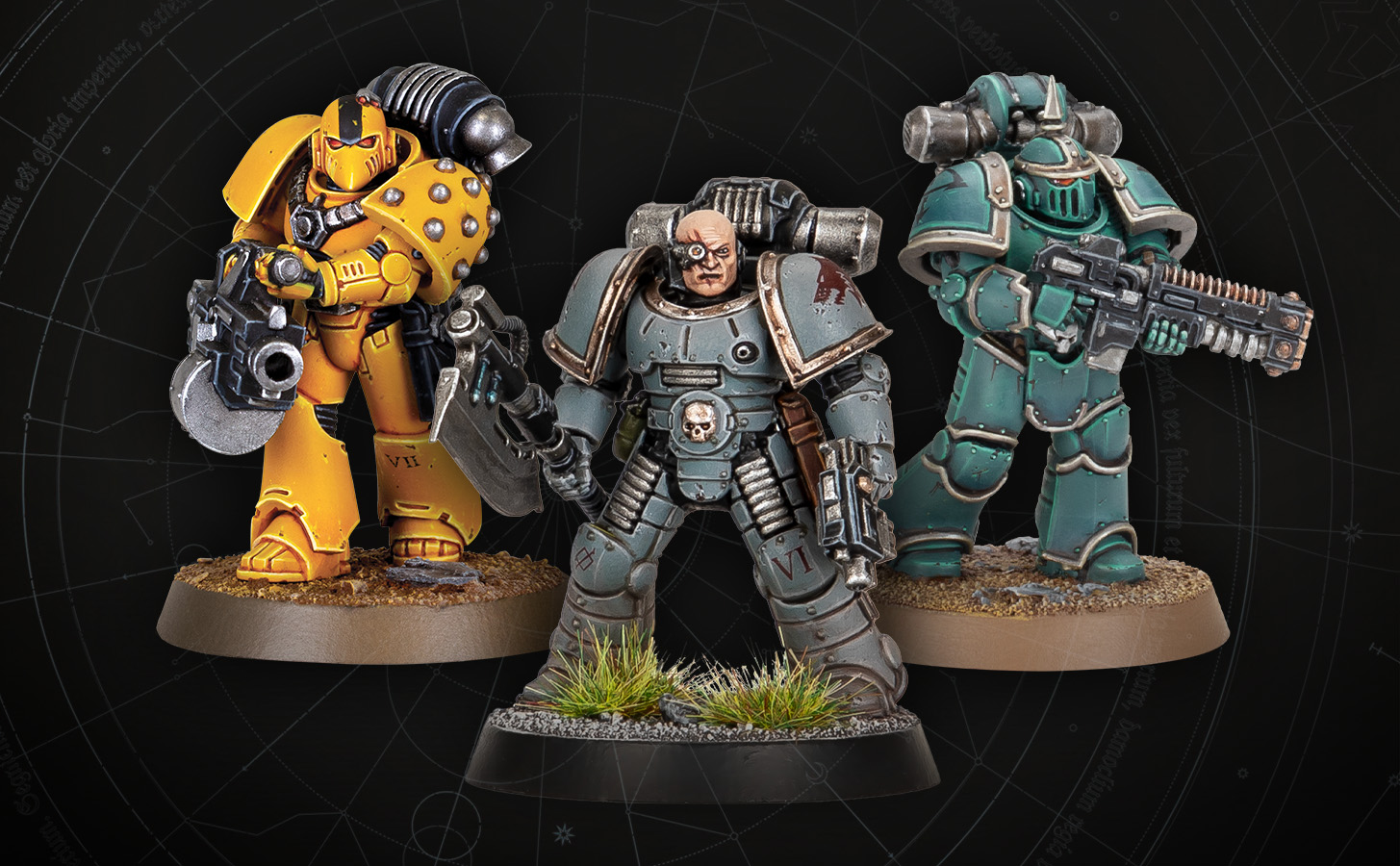The new edition of Warhammer: The Horus Heresy – Age of Darkness is close at hand. Ahead of pre-orders this weekend, Warhammer Community carried out a series of interviews with the development team in the Warhammer Studio, which we’ll be publishing this week. We kick off with one of the hot topics of the new release – the Saturnine project.

Andy (Product manager): We chose the Dropsite Massacre as the setting for the new edition because it’s the most significant event of the early Heresy. It’s incredibly important to the rest of the story, and it’s an event that we trusted everyone in the fanbase would recognise and enjoy exploring.
We made the first mockup of the Saturnine Terminators even before the 2022 Age of Darkness Boxed Set hit the shelves. We knew we would need something big and impressive in the new box, and as this is a quasi-historical game we didn’t want to pluck something out of thin air – just like the fans, we want to make sure everything feels rooted in the lore.. Saturnine Terminators had been mentioned in a black book* and in a Black Library novel, so they were the perfect choice.

The armour design is much older than that, however. We released what is now the classic pattern of Terminator armour – which we refer to as Indomitus – back in the 80s for Space Hulk.** During that project, three further miniature prototypes were made. One would be what became Saturnine, another has a strange hood and is sometimes referred to by fans as Cobra pattern, while the third looks like an Indomitus Terminator with a MkVII helmet. These were released as curios for fans who might enjoy them, but were never intended to be different types or a range.

Chris W (concept artist): The casting technique used for the original metal Saturnine miniature created that distinctive curved shape more than I think the intent had been, but it did get stuck in the collective memory.
There are other Terminators from this era, too. The plastic miniatures for the original Space Hulk were of the Indomitus pattern, but had a notable Saturnine-style curve to their pauldrons. We then released a box of metal Terminators which had the familiar modern silhouette, accompanied by a Librarian with a distinctive force hood and even an Inquisitor with a bionic leg and a ponytail.
Andy: We were conscious early on that we had the opportunity to show something big and impressive -- Saturnine pattern is Terminator armour plus.
James G (games developer): We looked at the weapon loadouts first of all to define a battlefield role. They have a melee weapon – the fists – but they are slower than other Terminators. So we focused on that ponderousness, and with dual ranged weapons they become a fire support option, who tend to be following behind your line, rather than at the forefront.
We wanted to play up esoteric technology like the thermal diffraction field which is part of their construction. They’re not Martian tech, they’re from Phoebe – a different tech canon.
Neil (lead writer): You can read some of this in the upcoming Journals Tactica, where information is scattered throughout about their origins and designs. They may be new to readers, but they’re not new to the universe, and there will be more written about their place in the setting in future books.
The tech split goes back a long way though, to Old Night when the Emperor was trapped in the Sol system. Prior to this point humanity had spread across the galaxy and seeded many planets, but it pulled back. Sol is now relatively busy in that we have the Emperor and his forces on Terra, who are incapable of anything other than short-range flights during the wars of Unity.
Mars is capable of limited extra-system flight, but it keeps to itself. There are also enclaves on Venus, Pluto, Saturn, Jupiter and in a couple of other places, most using the technological base that pre-existed the Imperium. Terra is unusual in that it has fallen back on older, more dangerous technology such as disintegrators. Mars meanwhile continued to develop on its own tech, and Phoebe (a moon of Saturn) is essentially a strange offshoot from Mars.
Andy: It’s a little like the story of the scholars being cast out of Oxford in the Middle Ages, then disappearing off into the fens and building Cambridge.
Neil: Further lore will expand on all of it (Mars, not Cambridge).
Saturnine armour is unlike regular Terminator armour, where you only need training on using the specific piece of wargear, or Dreadnoughts which require a specific surgical procedure.
Saturnine armour requires both technological skill and a small degree of psychic attunement – above the average of a Space Marine, but nowhere near the level of a Librarian.
One of the things you’ll see later is how different Legions adapted the technology to themselves. The Thousand Sons have the psychic discipline to get more out of it, while the Word Bearers have done their usual and stuffed Daemons into them. We’ll also see how legions like the Space Wolves use them, or the White Scars – given they have a different tactical doctrine.
Andy: You can expect a lot of calls to kitbash in the Journals. There’s so much cross-compatibility and modularity in The Horus Heresy range, which makes sense from both gaming and narrative points of view – many Legions had to scavenge and cobble together. We want to open up options for dedicated fans without forcing converted units into the Libers.
Neil: You can see this with the Saturnine Command Squad that was shown in a recent article, which is a kitbash brought together to make something unique, but not something we’d want people to feel required to make. Rules are coming in the second Journal Tactica.
Andy: As Saturnine Terminators date back to the Dark Age of Technology, they are all equipped with types of energy weapons. There are no ammo belts here, nor magazines to be changed, which fits with the esoteric technology they’re created from.

Neil: From a rules perspective all of their weapons have equivalents to the Gets Hot rule, but Saturnine armour is designed to resist some of these negative effects.
Andy: They also teleport, which is fairly unique even for Terminators in the Horus Heresy.
Dave (content lead): From a sculpting perspective, you can see – and even leave exposed – the underlying structure of both the Saturnine Terminators and the Dreadnought, which has complete Leviathan-style plate shoulders covered by the larger pads. This also helps out a great deal with sub-assemblies for painting.
Andy: We also wanted to exceed the Spartan and Contemptor from the previous Age of Darkness box, so we went big, extrapolating from the Saturnine Terminator design.
Chris W: After the idea came in, I responded with a bunch of sketches and concepts, ending up at something that could easily be described as a Knight’s baby brother.
Andy: The Saturnine Dreadnought is part of the same tech canon as the Terminators, but is a relatively new introduction.
James: This is something that Vulkan develops from data within the original Saturnine designs, a Dreadnought version that the artificers of Phoebe could never quite get to work. The Terminators existed early on in the Great Crusade but it proved impossible to manufacture them in the quantities needed, so they were abandoned in favour of Tartaros and Cataphractii patterns, while the Dreadnought remained unworkable with the technology of the time. Later, Vulkan goes “I reckon I can nail it…” The design is quite old, but with new technologies discovered during the Great Crusade and the genius of the Master of Nocturne, Vulkan brings it to life in time to fight at Isstvan V.

Chris D (miniatures designer): There was some work done to bring in design language from the existing Leviathan Dreadnought and marry it with the Saturnine Terminator design. The idea is to bring them together to show a common lineage between the designs, but to make them look a little more prototypical on the Saturnine Dreadnought, rather than the refined visuals of the Contemptor.
Neil: By Isstvan V there are barely any of these suits left, and it’s only Vulkan’s involvement that brings them back into service. After years of brutal warfare, Saturnine suits are unlikely to have survived much past the end of the Horus Heresy.
Just as with the Kratos, which were old, mothballed tanks dragged back into use for the Heresy, Saturnine suits are a relic which don’t chime with Guilliman’s desire for rapid warfare. They are a throwback the Emperor was using to defeat the horrors of Old Night, and they have no place in the new Codex Astartes.
James: It’s essentially a mid-range brawler, designed to destroy whatever it can get within range of – which it will do with enthusiasm. It’s not specialised; a Deredeo will probably win out at longer range, while a Levitathan will take it in a pitched close combat fight.

We got Chris W to concept all sorts of esoteric energy weapons for us, ones that didn’t necessarily map onto existing weapons – and then picked the ones we liked the most and worked to map them into familiar visual language. Some are completely new to Warhammer.
Chris W: It was a lot of fun to go completely off the wall with my designs, trying to imagine what the Emperor might have looked at and said “nah, that’s too dangerous, we’re going to park that one for now…”
Thanks very much guys. We’ll return later in the week, with another interview discussing all the things that aren’t Saturnine.
* A commonly used term for the books from the first edition of The Horus Heresy game, which were leather-bound, and black.
** A classic Warhammer board game in which squads of Terminators would get systematically ripped to shreds by Genestealers.













